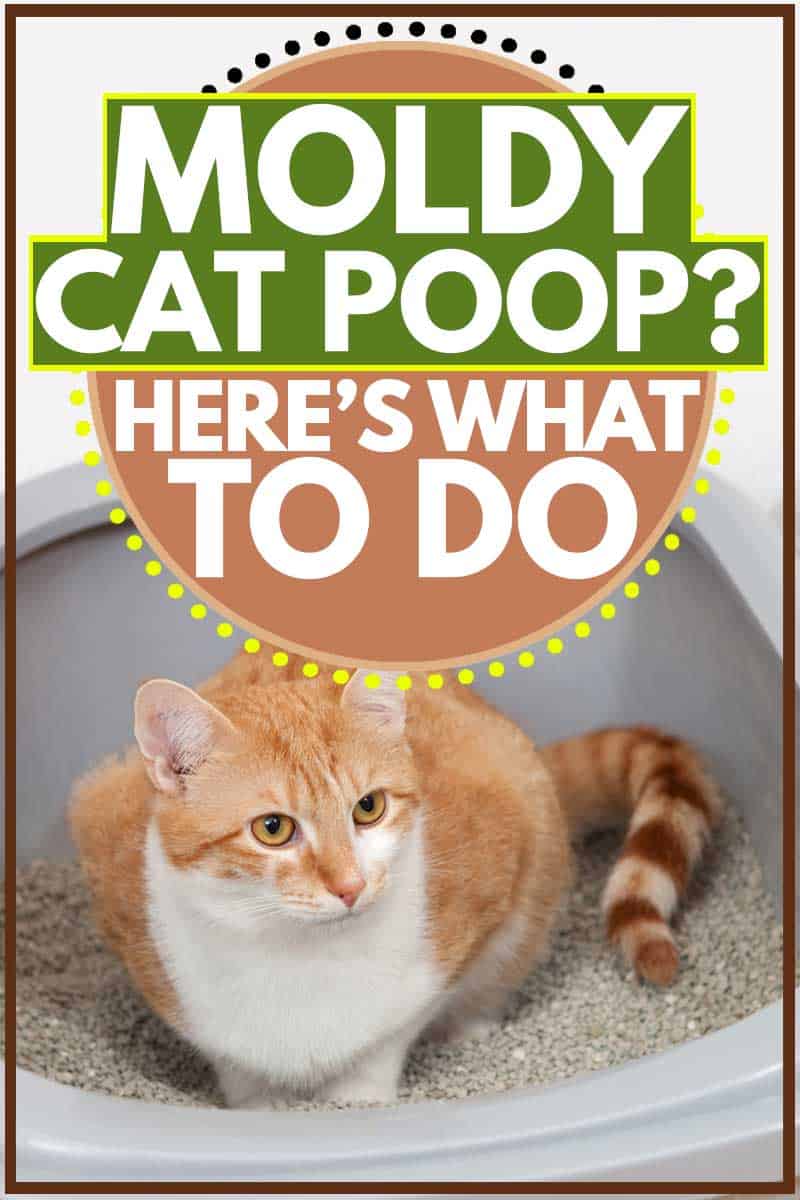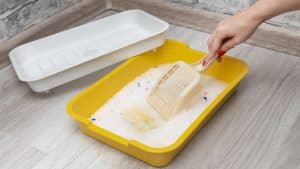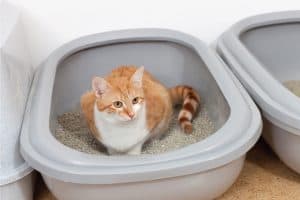Reader's Question:
I'm having an odd problem with my cat's litter box. I've noticed mold growing on some of her poop. It's fuzzy and green - so gross! This is literally a hairy poop situation! What causes mold to grow on cat poop in the litter box? Is it dangerous for my cat? Please help me get rid of it and prevent it from coming back. My cat deserves clean litter!
Laura A., Biloxi, Mississippi
Mold can develop in moist environments, and cat feces, if left for an extended period in a humid or poorly ventilated area, can be a breeding ground for mold spores.
While the presence of mold might not directly harm your cat if they don't ingest it, it's a sign that the litter box conditions might not be optimal. A clean and dry litter box environment is crucial not only to prevent mold growth but also for your cat's overall well-being.
I'll provide you with detailed steps and recommendations on how to address this issue and prevent it from reoccurring. Your cat, indeed, deserves a clean and safe space.
How to Deal with Moldy Cat Poop - step by step
Let's jump right into the solutions to dealing with mold on cat feces -
- Frequent Cleaning
- Change Litter Type
- Ventilation
- Check for Underlying Issues
You're probably looking for more detail, so let's elaborate on these steps.
Frequent Cleaning
Mold finds it harder to grow in a clean environment. Scooping out feces and clumps daily is essential. Additionally, cleaning the entire litter box with mild detergent and warm water at least once a week can prevent mold buildup.
Litter Type
Some litters are more absorbent than others. If you're facing mold issues, it might be time to consider switching to a different type of litter that's more efficient at absorbing moisture. There are various options available, such as clumping clay litters or those made from silica gel crystals.
Ventilation
The location of the litter box plays a role in mold growth. Placing it in a well-ventilated area can help keep the litter dry, reducing the chances of mold. If the box is currently in a damp or humid location, like a basement, consider relocating it.
Underlying Issues
If your cat's feces are more moist than usual, it could be a sign of an underlying health concern. Consulting with a veterinarian can help identify if there's a specific reason for the consistency of the feces and offer solutions.
Here's why mold can grow on cat poop
Mold thrives in moist, warm environments. If cat feces in the litter box remain moist for an extended period, it can become a breeding ground for mold.
This can happen if the litter isn't absorbent enough, the box isn't cleaned frequently, or if there's inadequate ventilation in the area where the litter box is placed.
Is mold on cat poop dangerous?
Mold can produce allergens and irritants. While it may not be directly harmful if consumed in small amounts, continuous exposure can lead to respiratory issues or allergic reactions in both cats and humans.
That's why you should address the mold as soon as it crops up. It's not only Kitty's health that's at stake, but also the well-being of everyone in the household.
And stay calm. If you only just noticed the mold, chances are no harm was done, and all you have to do is address the cause and fix the problem.
What Does Hairy Cat Poop Mean?
Lastly, since you mentioned "hairy poop," I'd like to touch on this unsightly point.
We just discussed how mold spores can grow on cat poop after your cat has defecated because the litter box environment is moist and warm. And yes, mold fungi can sometimes grow on tiny stalks, giving them the appearance of hair or fuzz.
However, it's worth mentioning the other type of "hairy cat poop," where on closer inspection, you might determine that the cat poop is not moldy; instead, it contains cat hair.
Poop-containing hair can be an indication that your cat is over-grooming. Cats do ingest some hair while grooming, and this is natural. But, over-grooming can lead to other health ailments like constipation or obstructive hairballs.
Just thought this was worth mentioning at the end of our little discussion on moldy cat poop!




